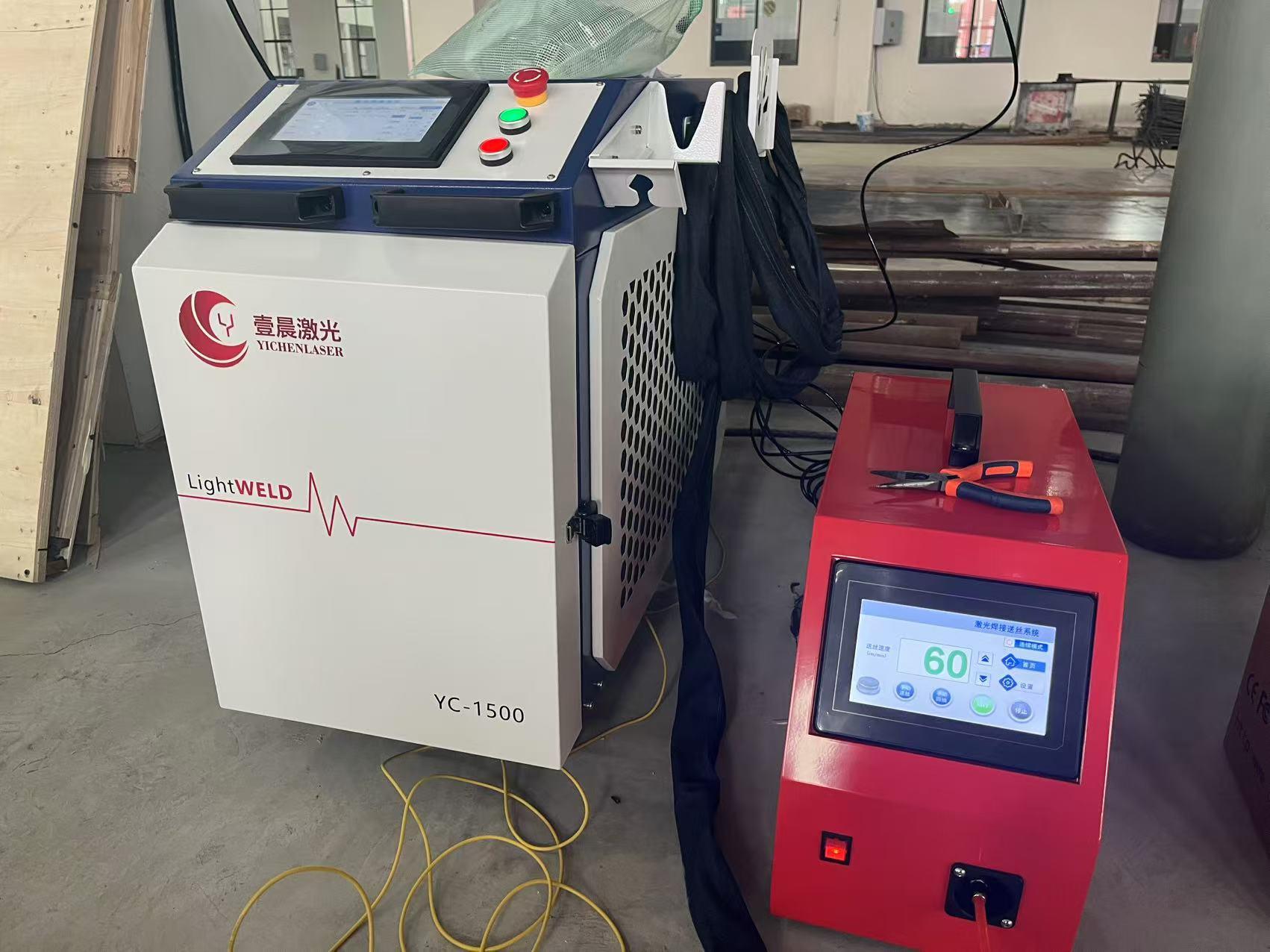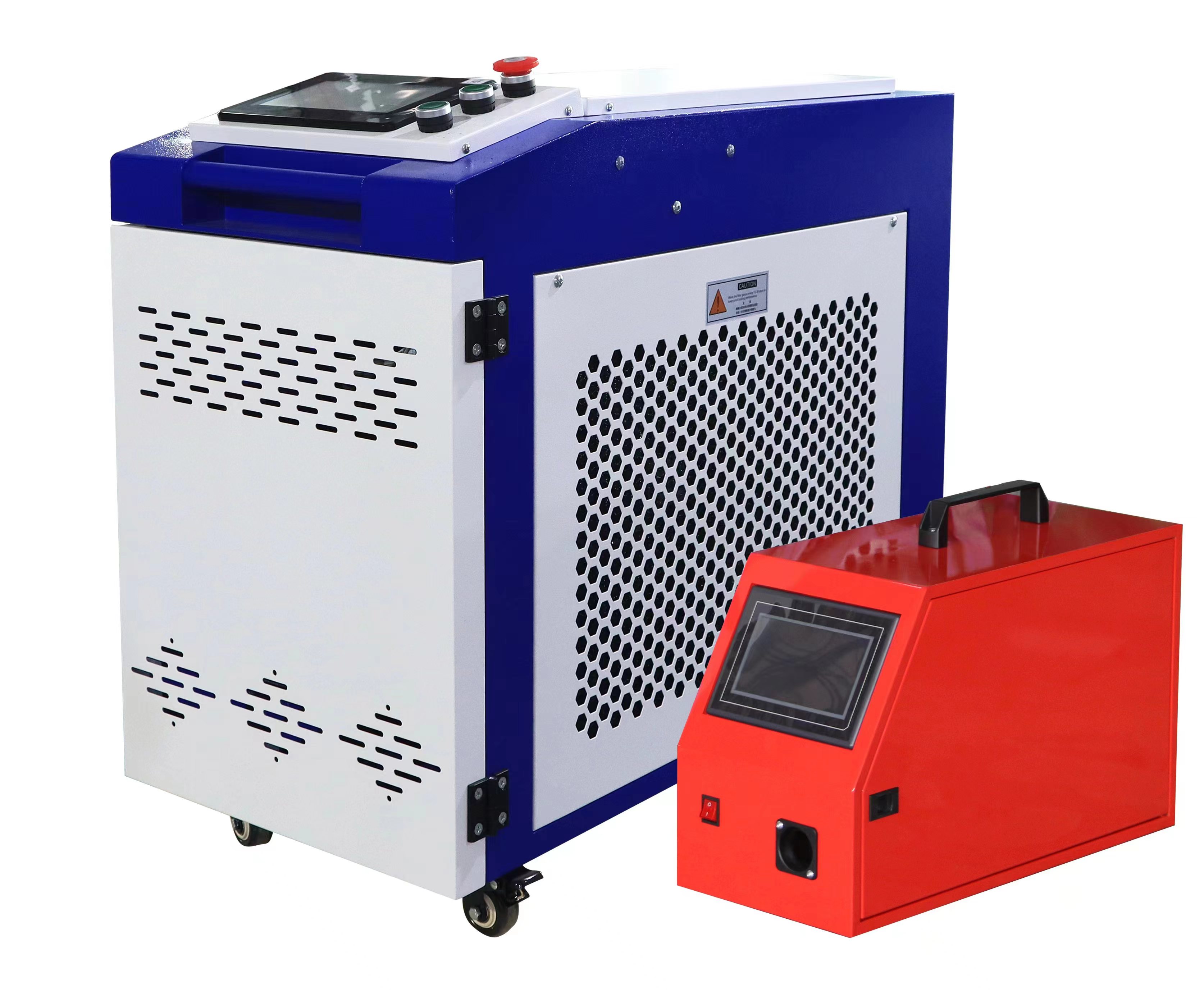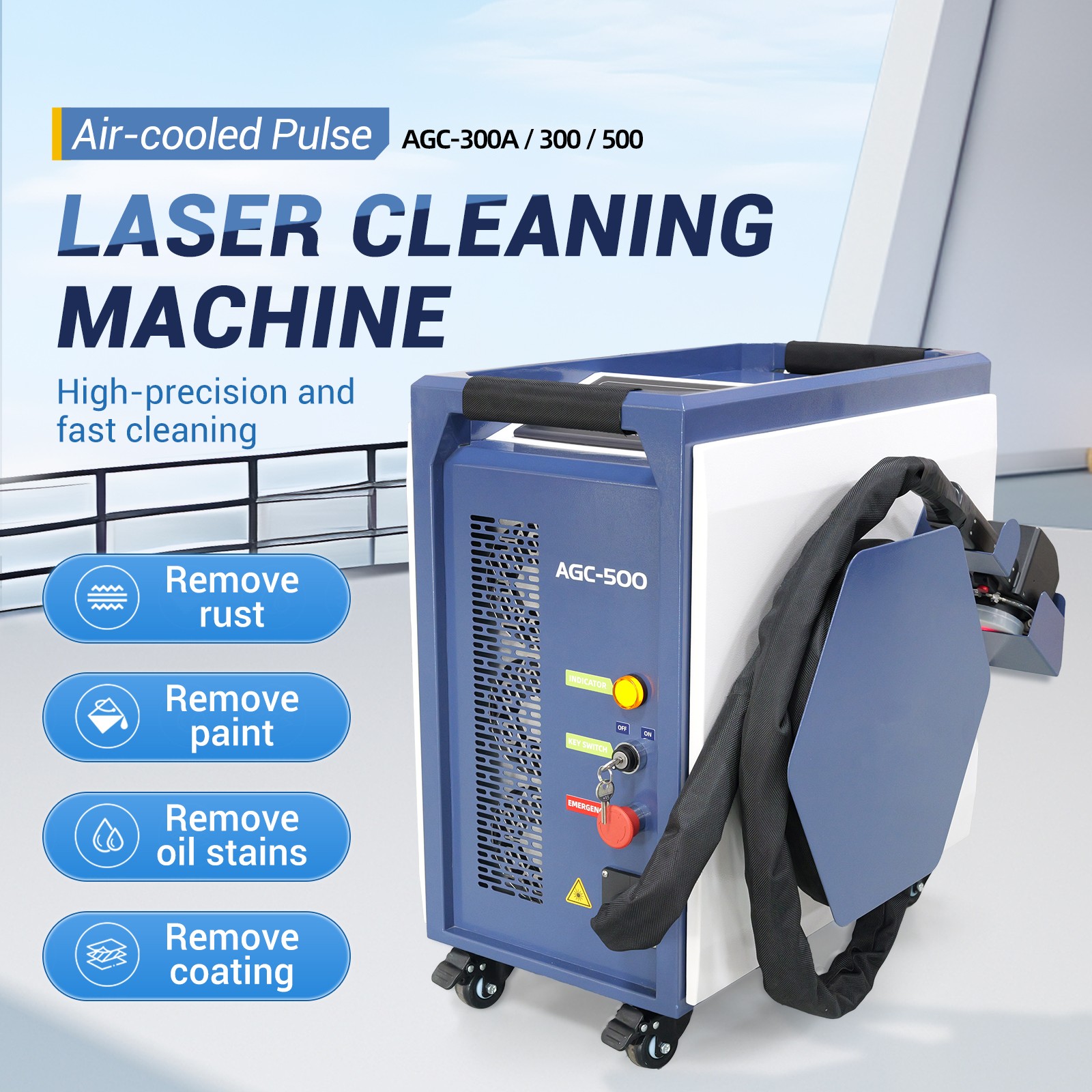As someone who’s spent years working with surface treatment technologies, I’ve had the chance to witness the transformative power of laser rust removal machines firsthand. These high-tech tools have become a game-changer for removing rust, paint, and other contaminants from metal surfaces with precision and efficiency. But one question I often hear from curious beginners, DIY enthusiasts, and even seasoned professionals is: do you need training to use a laser rust removal machine? The answer isn’t a simple yes or no—it depends on the context, the equipment, and your goals. In this article, I’ll share my insights on why training matters, what it involves, and how you can safely and effectively use these machines, drawing from my own experiences in the field.

Why Training Matters for Laser Rust Removal Machines
Laser rust removal machines are not your average power tools. They use high-energy laser beams to vaporize rust, paint, or other coatings, leaving the underlying material intact. While this sounds straightforward, the technology is sophisticated, and improper use can lead to safety risks, equipment damage, or subpar results. I’ve seen operators achieve stunning results with minimal effort, but I’ve also seen mistakes—like scorched surfaces or even minor injuries—when proper training was skipped.
Training ensures you understand the machine’s capabilities, limitations, and safety protocols. It’s not just about pressing a button; it’s about knowing how to adjust settings, handle different materials, and protect yourself and others. When I first started using a laser rust removal machine, I was amazed by its precision, but it took proper training to realize its full potential without risking mishaps.
What Does Training for Laser Rust Removal Involve?
Training for laser rust removal machines typically covers several key areas, blending technical knowledge with hands-on practice. Based on my experience, here’s what you can expect from a comprehensive training program:
Equipment Basics
You’ll learn the components of the machine, including the laser source, cooling system, and control interface. Understanding how these parts work together is crucial for troubleshooting and maintenance.
Safety Protocols
Lasers can be hazardous to eyes and skin, so training emphasizes protective gear like laser-specific goggles and gloves. You’ll also learn about safe operating distances and how to avoid reflective surfaces that could redirect the beam.
Parameter Settings
Different surfaces and coatings require specific laser settings, such as power, pulse frequency, and beam width. Training teaches you how to adjust these parameters to avoid damaging delicate materials or wasting energy on tough coatings.
Material Knowledge
Not all surfaces react the same way to lasers. Training covers how to handle metals, composites, or even wood, ensuring you don’t burn or warp the substrate.
Hands-On Practice
Practical sessions let you apply what you’ve learned, like stripping rust from a steel plate or paint from a car panel. I remember my first training session—practicing on a scrap piece of metal felt like mastering a new craft.
Maintenance and Troubleshooting
You’ll learn how to clean the laser lens, check the cooling system, and diagnose common issues like uneven beam output. Proper maintenance extends the machine’s lifespan and ensures consistent results.

Do You Really Need Formal Training?
The need for formal training depends on your role and the complexity of the tasks. Here’s how it breaks down:
Professionals in Industrial Settings: If you’re operating high-powered machines (500W and above) in a workshop or factory, formal training is non-negotiable. These machines are powerful, expensive, and often used on critical components, like aerospace parts or heavy machinery. Most manufacturers or suppliers offer training programs, and some industries require certification for compliance.
Small Business Owners or Auto Shops: If you’re running a small auto repair shop or restoration business, you might start with a lower-powered handheld machine (100W–300W). While these are more user-friendly, training is still highly recommended to maximize efficiency and safety. I’ve seen shop owners who skipped training struggle with inconsistent results, wasting time and money.
DIY Enthusiasts: For hobbyists using entry-level machines, formal training might not be mandatory, but at least a basic tutorial—often provided in the machine’s manual or online videos—is essential. When I helped a friend set up his DIY laser rust removal kit, we spent an afternoon going through the manufacturer’s online course, which saved him from costly mistakes.
Without training, you risk damaging the equipment, the workpiece, or yourself. I once saw an untrained operator set the laser power too high, scorching a client’s vintage car fender. A quick training session could have prevented that headache.

Comparing Trained vs. Untrained Operation
To illustrate the impact of training, I’ve put together a table comparing trained and untrained operators based on my observations:
| Aspect | Trained Operator | Untrained Operator | Key Difference |
|---|---|---|---|
| Safety | Follows strict protocols, uses protective gear | May overlook safety, risking injury | Reduced risk of accidents |
| Efficiency | Optimizes settings for fast, consistent results | Trial-and-error approach, slower process | Faster, more reliable outcomes |
| Surface Quality | Preserves substrate, minimal damage | Risk of scorching or uneven cleaning | Better finish, less rework needed |
| Equipment Longevity | Regular maintenance, proper handling | Potential misuse, leading to wear or breakdowns | Longer machine lifespan |
This table underscores why training is worth the investment. A trained operator not only works faster but also delivers better results while keeping safety first.
Where to Get Training for Laser Rust Removal Machines
If you’re convinced training is necessary, you might wonder where to start. Here are some options I’ve seen work well:
Manufacturer Training Programs
Most laser rust removal machine suppliers offer training, either in-person or online. These programs are tailored to specific models, covering everything from setup to advanced techniques. When I bought my first machine, the manufacturer provided a two-day workshop that was invaluable.
Online Courses and Tutorials
Many companies post video tutorials or webinars on platforms like YouTube or their websites. These are great for beginners or DIY users. I often recommend checking the manufacturer’s official channel for model-specific guidance.
Industry Workshops
Trade shows or industry associations sometimes host workshops on laser technology. These are excellent for networking and learning from experts. I attended one at a manufacturing expo, and the hands-on demos gave me new ideas for optimizing my workflow.
On-the-Job Training
If you work in a shop with experienced operators, shadowing them can be a practical way to learn. I mentored a new colleague this way, starting with simple tasks and gradually moving to complex projects.
Certification Programs
For industrial applications, some regions offer certification courses for laser equipment operation. These are more formal and may be required for certain jobs, especially in aerospace or automotive industries.

Safety: The Non-Negotiable Aspect of Training
I can’t stress enough how critical safety training is. Laser rust removal machines emit high-energy beams that can cause serious harm if mishandled. Here are key safety points covered in training:
Eye Protection: Always wear laser-specific goggles rated for the machine’s wavelength. Standard safety glasses won’t cut it. I once saw an operator try to “tough it out” without goggles—luckily, a colleague stopped him before any damage occurred.
Skin Protection: Wear gloves and long sleeves to shield against stray beams or hot surfaces. Reflective surfaces, like polished metal, can redirect the laser unexpectedly.
Ventilation: Laser ablation produces fine dust or fumes, especially when removing paint or coatings. Training teaches you to use proper ventilation or dust extraction systems.
Safe Positioning: Keep bystanders at a safe distance and avoid pointing the laser at reflective surfaces. I always double-check my surroundings before starting a job.
Ignoring these protocols can lead to burns, eye damage, or even fires. Training drills these habits into you, making safety second nature.
Practical Tips for Getting Started Without Formal Training
If formal training isn’t immediately accessible, you can still use a laser rust removal machine safely with some preparation. Here’s what I advise based on my early days with these machines:
Read the Manual Thoroughly: Every machine comes with a detailed manual. Study it, especially the sections on safety and recommended settings. I spent a weekend poring over my first machine’s manual, and it saved me from rookie mistakes.
Start with Low Power: Begin with the lowest power setting and test on a scrap piece. This helps you understand how the laser interacts with different materials. I practiced on old metal scraps before tackling a client’s project.
Watch Manufacturer Videos: Most brands offer free online tutorials. I found a series of videos from my machine’s manufacturer that walked me through basic operations and troubleshooting.
Join Online Communities: Forums or social media groups for laser rust removal enthusiasts are goldmines for tips. I’ve learned plenty from fellow operators sharing their experiences online.
Consult a Professional: If you’re unsure, hire a trained operator for your first project and observe their process. I did this early on, and it gave me confidence to operate solo later.

Real-Life Example: The Difference Training Makes
Let me share a story that drives home the value of training. A client approached me to restore a rusted industrial pump coated with old paint. Initially, an untrained worker in their shop had tried using a borrowed laser machine. They set the power too high, scorching the pump’s surface and wasting hours. I stepped in, having been trained on a similar machine, and adjusted the settings to a lower power with a wider beam. In just a few hours, the pump was clean, with no damage to the metal. The client was relieved, and I earned their trust for future projects. That experience showed me how training can turn a potential disaster into a success.
Costs and Time Commitment of Training
Training costs vary widely. Manufacturer-led programs might range from free (included with purchase) to several thousand RMB ($100–$500 USD) for multi-day workshops. Online courses are often cheaper, sometimes under 500 RMB ($70 USD). In my case, I invested in a two-day in-person course that cost about 2,000 RMB ($280 USD), but it paid off in the confidence and skills I gained.
Time-wise, basic training can take a few hours for DIY users, while professional programs might span 1–3 days. Ongoing practice is key to mastering the machine, but even a short course can get you started safely.
The Future of Laser Rust Removal Training
As laser rust removal machines become more common, training is evolving too. Manufacturers are developing user-friendly interfaces with built-in tutorials, and some are experimenting with virtual reality simulations for hands-on practice. I’m excited about these advancements, as they’ll make training more accessible, especially for small businesses and hobbyists. In the future, I expect to see more standardized certifications, which could raise the bar for professional operators.

Conclusion
Does using a laser rust removal machine require training? In most cases, yes—especially for professional or industrial applications. While entry-level machines are designed to be user-friendly, training ensures you operate safely, efficiently, and with high-quality results. From mastering safety protocols to optimizing settings for different materials, training equips you to get the most out of this powerful technology. For DIY users, basic self-study and practice can suffice, but formal training is a worthwhile investment for anyone serious about consistent, professional outcomes.
If you’re considering a laser rust removal machine, start with the resources available—manuals, videos, or a professional course—and don’t hesitate to reach out to experienced operators for advice. Got questions or stories about your own laser rust removal journey? I’d love to hear them—let’s keep the conversation going!

Related Q&A
1. Can I learn to use a laser rust removal machine just from the manual?
While manuals provide essential information, they’re no substitute for hands-on practice or training. Manuals cover basics, but training helps you understand nuances like material-specific settings and safety.
2. How long does it take to get trained?
Basic training for hobbyists can take a few hours, while professional courses may last 1–3 days. Mastery comes with practice, but a short course gets you started safely.
3. Is training required for all laser rust removal machines?
Not always, but it’s highly recommended, especially for high-powered or industrial models. Entry-level machines may only need self-study, but training reduces risks and improves results.
4. How much does training cost?
Costs range from free (manufacturer tutorials) to 2,000–3,000 RMB ($280–$420 USD) for in-person workshops. Online courses are often cheaper, around 200–500 RMB ($30–$70 USD).
5. What happens if I use a laser rust removal machine without training?
You risk safety hazards (like eye or skin damage), poor results (like scorched surfaces), or equipment damage. Training minimizes these risks and boosts efficiency.






